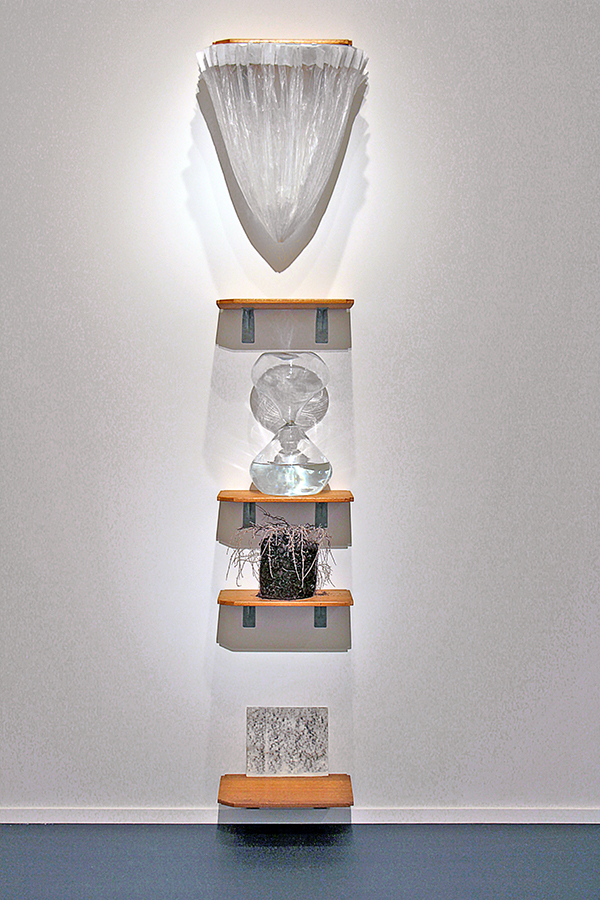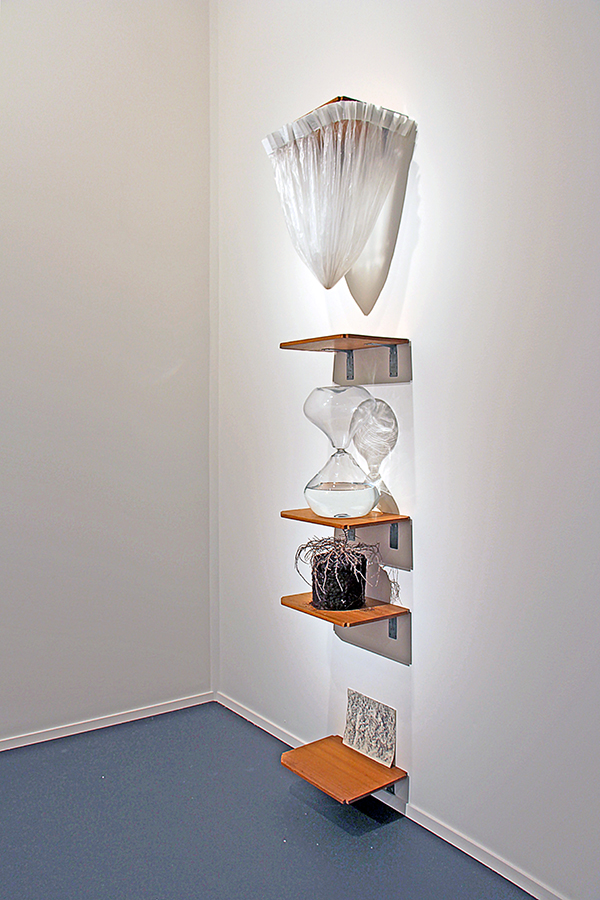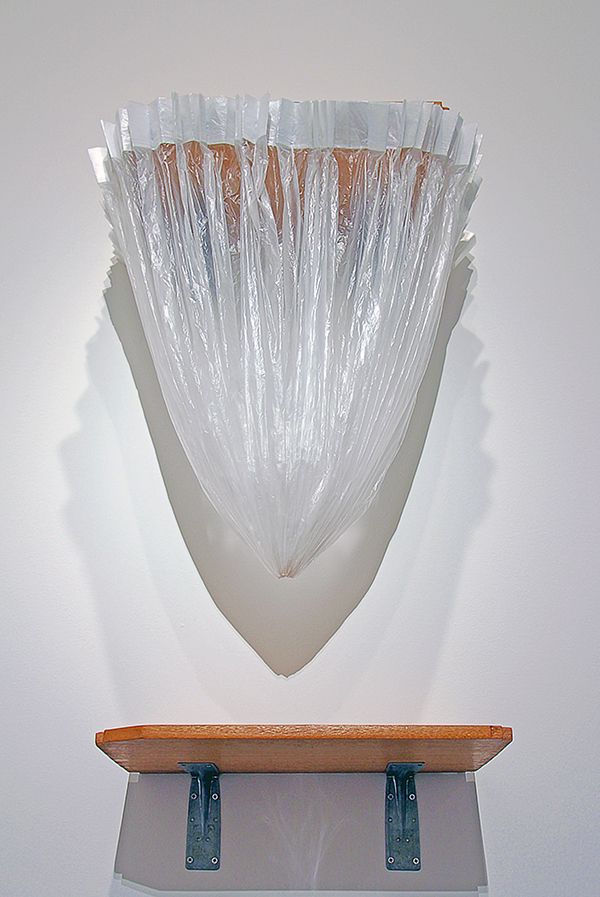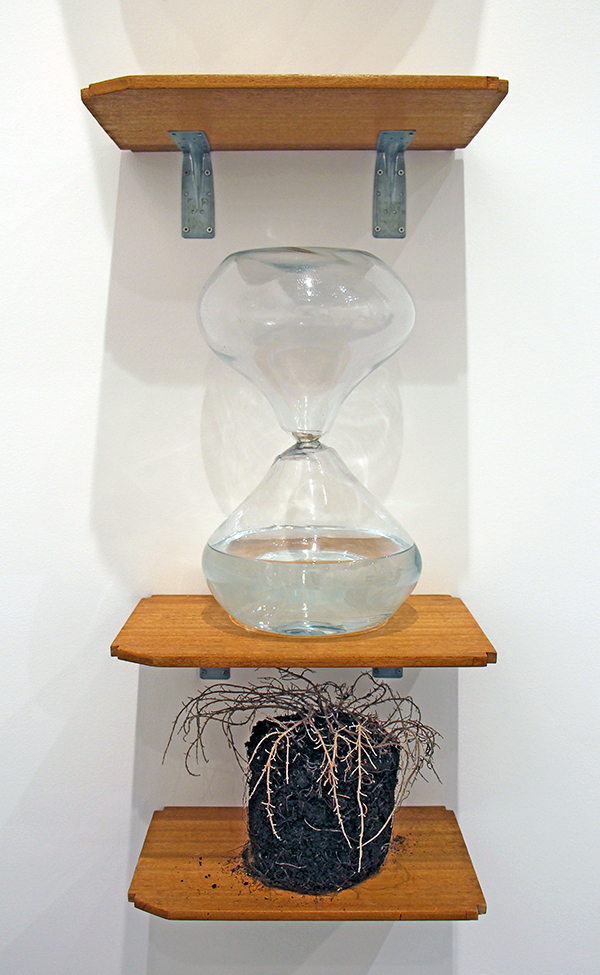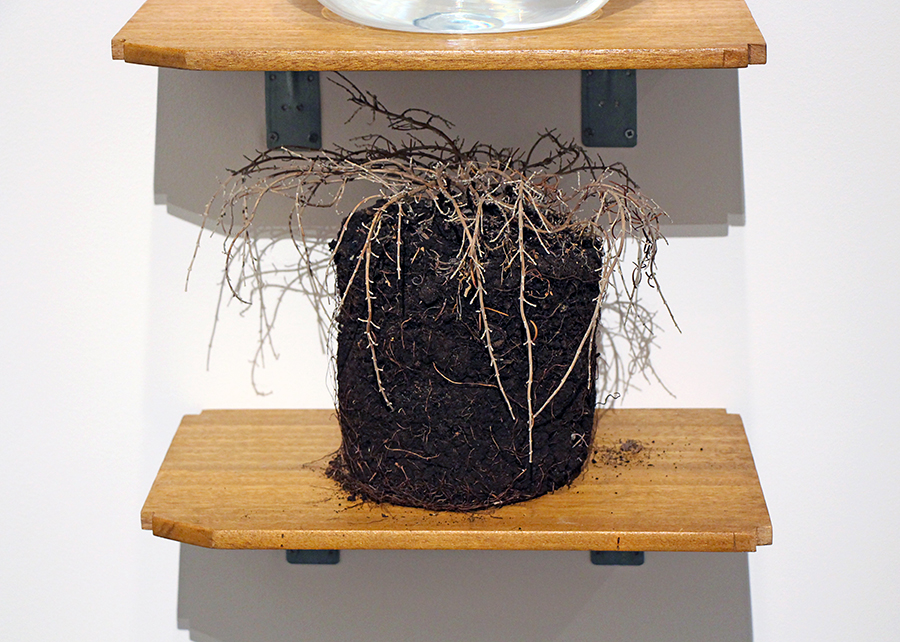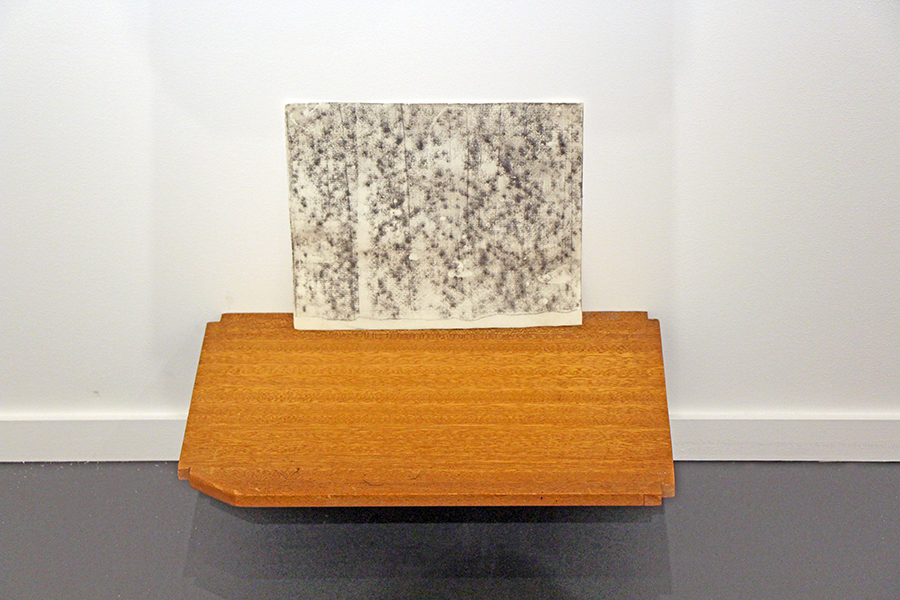Le haïku est un petit poème extrêmement bref, une forme poétique très codifiée d’origine japonaise. Visant à dire et célébrer l’évanescence des choses, faisant toujours référence à la nature ou à un mot clé concernant l’une des quatre saisons, il répond à des règles de composition rigoureuses. D’origine japonaise, Suchan Kinoshita, connaît les règles du haïku. Elle les applique ici, distillant quatre éléments qui tous font partie de son vocabulaire plastique : un rideau transparent, un clepsydre rempli d’eau, une plante dépotée, un fusain ou plutôt devrait-on dire un lavis, monochrome, dilué, plein d’humus. L’eau, l’humidité semble traverser l’œuvre de haut en bas, goutte à goutte, filtrée par le cône renversé du rideau de douche, traversant le clepsydre, donnant renaissance à la plante dépotée, humectant le terreau du fusain. C’est bien sûr la plante qui fait office de « kugo », cette référence indispensable à la nature et au cycle des saisons, tandis qu’apparaissent les quatre éléments premiers, l’air et le vent dans le rideau, l’eau du clepsydre, la terre de la plante et le charbon, donc le feu, du fusain. Ce Haïku pour Liège, car destiné à une exposition liégeoise en 2009, évoque le cycle de la vie, la fertilité, le féminin, la promesse de renouveau, à la fluidité de la pensée. Elle fait référence à cette autre œuvre emblématique de l’artiste, titrée « Meaning is moist », la pensée est humide, la pensée est liquide.
(…) The reclining figure has a small canon of variations. The form itself may be more or less horizontal. The effigy form found on medieval tombs is very different from the recumbent form beloved of the early modern period, in which it reprised the Classical. The effigy is completely quiescent, with any action or movement associated only with the power of prayer. Henry Moore, indeed, much preferred the apparently living to the obviously dead, and normally chose a posture which would indicate frontal address. As Daria Santini outlines in her essay here, this goes back most obviously to the Etruscan and Classical forms denoting conversation and conviviality.
This kind of proper collegiality is far from the use of the form to denote sexual abandon. The more undulating the form, the more naked, the more expressive of sexual availability. While innumerable artists have traced the profile of the reclining female form, few have allowed it to melt into the near formlessness of Rodin and Schiele. The promise of plenty can be seen to reside within the reclining figure, male or female, and most typically as an allegory of water. The decoration of fountains is often constituted by reclining figures who can be seen to represent, in their potential merging with the land or the sea, a kind of natural home and conjunction of figure and landscape, agency and resource. The sedimentary rocks and tufa of the Roman basin allowed the figure almost literally to arise out of the ground. The earth as a female form, fertile and ready for insemination, is conjured up very succinctly in the image of Danaë receiving the shower of gold unleashed by Zeus in his passion. This very painterly image may be the trigger for modern-day treatments of the theme; it certainly echoes them. (…)
Penelope Curtis in « La Grande Horizontale », TEFAF Curated 2017, Maastricht, p.18
Suchan Kinoshita
Haïku for Liège, 2009
technique mixte, plante, dessin, verre, eau, plastique,
278 x 39 x 42 cm
[sociallinkz]
